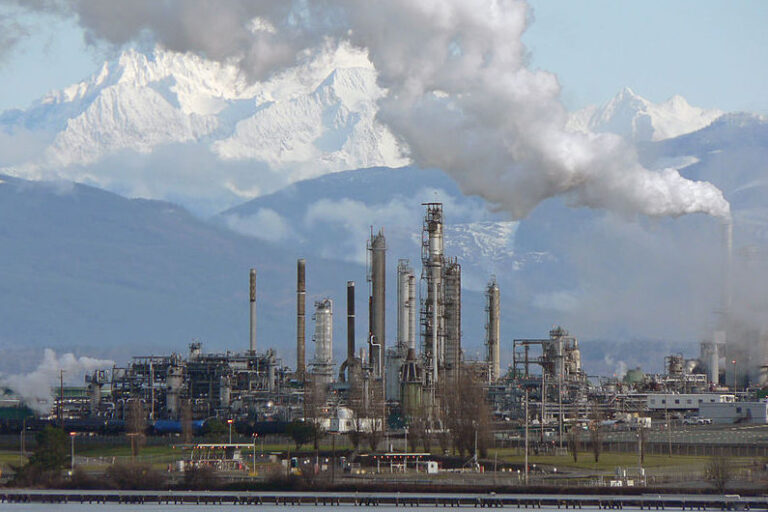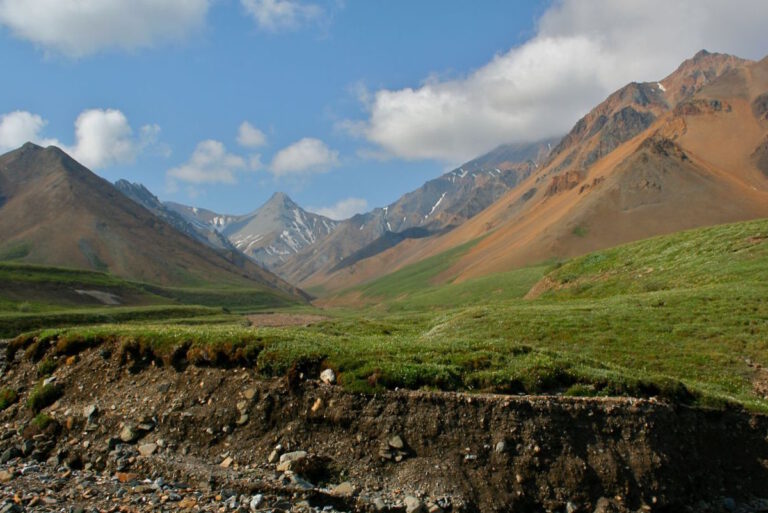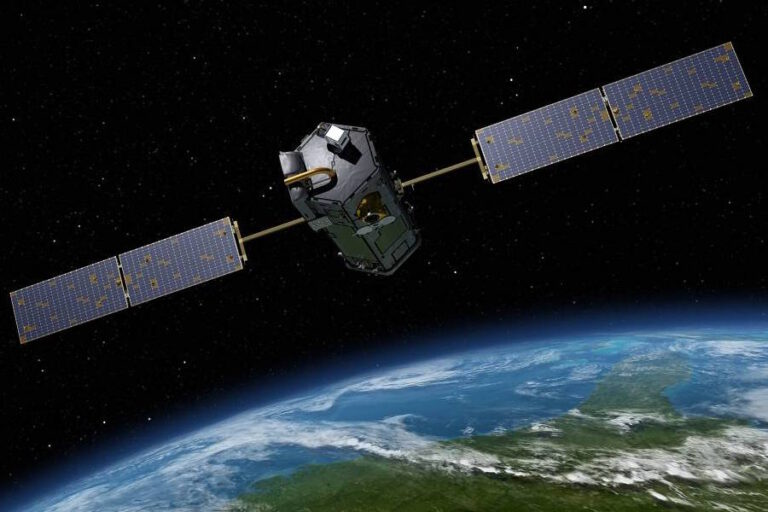Greenhouse gas research group
@ Johns Hopkins University
Associate professor Scot M. Miller
Greenhouse gas research
Associate professor Scot M. Miller
What we do
We study the emissions of greenhouse gases and air pollutants. The effects of greenhouses gases and air pollutants on climate and health are well-known. However, the emissions of these gases are often highly uncertain. We use observations of greenhouse gases collected from airplanes, towers, and satellites to estimate emissions across individual states to entire continents. Furthermore, we want to understand more than just how much is being emitted but also where these gases are emitted, why they are emitted, and who or what is responsible. Our recent projects investigate methane emissions from the US oil and gas industries, natural greenhouse gas sources from the Arctic (as in the photo above), and the effectiveness of recent greenhouse gas regulations in China.
Our research incorporates several broad themes:

Energy systems: Coal, oil, and natural gas industry operations sometimes leak gases into the atmosphere, particularly methane. In many cases, these leaks could be fixed, or the gases could be captured and used to produce energy. We want to understand the magnitude of these emissions, how they compare to other human-caused sources, and the effectiveness of recent emissions regulations.

Natural sources: Natural greenhouse gas sources and sinks will likely change as the Earth’s climate warms. In order to robustly predict these future changes, we need to understand what levers control current natural sources and sinks. We use a wide variety of atmospheric and satellite observations to understand the environmental factors that drive these sources and sinks with a goal of improving future predictions.

Big data: Satellite technology for monitoring greenhouse gases in the atmosphere has improved dramatically in the past decade. These satellites collect millions of observations every year, a massive amount of data that presents enormous challenges for estimating greenhouse gas emissions. We develop statistical models that can leverage millions of observations to estimate emissions at millions of locations across the globe.
News

New paper on ethane emissions from the US
Aug. 2024: Recently-graduated PhD student Mingyang Zhang published the paper in Environmental Science & Technology. Ethane may be a tracer for leaks from the oil and natural gas industries.

New paper on the seasonal cycle of carbon dioxide fluxes
Aug. 2024: Postdoc Ruixue Lei published a paper on the seasonal cycle of terrestrial CO2 fluxes across the globe. The paper is available here.

Welcome Kristan!
May 2024: Kristan Morgan started her PhD in the group. Kristan has worked at NASA Goddard for many years on the OCO-2 and OCO-3 missions. She’ll stay on at Goddard while pursuing her PhD at JHU.

Dylan Gaeta's study in the press
Apr. 2024: Dylan Gaeta’s study on sulfuryl fluoride was featured in the LA Times, SF Chronicle, and Newsweek.

New paper on sulfuryl fluoride, a pesticide and greenhouse gas
Apr. 2024: PhD student Dylan Gaeta found that California accounts for most US emissions of this greenhouse gas. The gas is a pesticide mostly used for fumigation. The paper is available here.

Mingyang Zhang defends her PhD!
Feb. 2024: PhD student Mingyang Zhang successfully defended her PhD. Congrats, Mingyang!! During her PhD, Mingyang studied coal methane in China and emissions of air pollutants from US oil and gas operations.

Grant to study CO2 sources and sinks in tropical ecosystems
Dec. 2023: We received a grant from the NASA Orbiting Carbon Observatory program to study tropical carbon fluxes and what drives changes in those fluxes during El Niño and La Niña cycles. The project is a collaboration with Debbie Huntzinger at Northern Arizona University.

New paper on solar-induced fluorescence
Dec. 2023: PhD student Mingyang Zhang’s paper is titled, “Solar-induced fluorescence helps constrain global patterns in net biosphere exchange, as estimated using atmospheric CO2 observations.” The paper is available here.

Paper on greenhouse gases and atmospheric transport
Jul. 2023: PhD student Leyang Feng explored how year-to-year variability in atmospheric winds can complicate the task of estimating trends in greenhouse gas emissions. The paper is available here.

Congrats, Dylan!
May 2023: PhD student Dylan Gaeta received JHU’s Geyh-Bouwer Award. The award is for students “whose application of science demonstrates the betterment of the environment and/or public health.” Congrats, Dylan!

JHU Catalyst Award
May 2023: We received a JHU Catalyst Award to study greenhouse gas emissions from China using satellite data. The award funds early career JHU faculty.

NSF CAREER Award
Apr. 2023: We received the NSF early career (CAREER) award to study methane emissions from North America. The project also includes a summer outreach program on climate change in Baltimore City Public Schools.

New PhD students joining the group this summer and fall.
Apr. 2023: Mason Liu, Ao Chen, and Qiulun Li will be joining the lab this summer or fall. Before coming to JHU, Mason completed a masters at JHU, Qiulun a masters from Emory, and Ao a masters from Stanford.

Paper on new methods to quantify greenhouse gas super-emitters
Feb. 2023: Collaborator Jiahua Jiang has developed a new approach to identify very large greenhouse gas emissions sources, also known as super-emitters. The paper has been accepted to SIAM Journal on Scientific Computing and is part of our collaborative grant from the NSF Division of Mathematical Sciences.

New interdisciplinary project to understand environmental quality in Baltimore
Sept. 2022: We’re part of a DOE project to create an urban integrated field laboratory around environmental issues in Baltimore. JHU professor Ben Zaitchik is leading the effort, and the project website details the full scope of the research efforts.

Climate change course featured in JHU news
May 2022: Scot and PhD student Dylan Gaeta taught a spring semester field course on climate change. The course used California as a case study to explore how and why climate changed in the past, how it’s changing in the present, and what policymakers are doing about it. See the JHU News story here.

New grant to study greenhouse gas sources in the Arctic
Apr. 2022: We’ll be working with Debbie Huntzinger at Northern Arizona University and Vineet Yadav at NASA JPL to quantify greenhouse gas sources across the Arctic using recent aircraft and ground-based measurements. The grant is part of NASA’s Arctic-Boreal Vulnerability Experiment (ABoVE).

Congrats to PhD student Mingyang Zhang
Mar. 2022: Congrats to Mingyang on receiving the Lee and Albert Halff Doctoral Student Award and the Carl E. Heath Fellowship for the Support of Graduate Women in Engineering. Both awards are given to engineering students at Johns Hopkins who excel in their doctoral research.

Interview with Dylan Gaeta on sulfuryl fluoride
Mar. 2022: The Johns Hopkins Hub interviewed PhD student Dylan Gaeta about a rare greenhouse gas called sulfuryl fluoride, why these emissions are so concerning, and how the gas could spell trouble for the state of California.

Nature article featured in the press
Mar. 2022: Our Nature article was featured in several news outlets, including the Guardian, Newsweek, and NPR’s morning edition.

Nature article: G20 countries failing climate commitments
Mar. 2022: We published an article in Nature with Jonas Nahm and Johannes Urpelainen (both public policy faculty at JHU). We found that countries aren’t building back better through the COVID-19 pandemic and are falling short of greenhouse gas emissions commitments.

Dylan Gaeta's AGU presentation featured in EOS magazine
Jan. 2022: Dylan is studying US emissions of sulfuryl fluoride, a pesticide and potent greenhouse gas that is overlooked by most state and national greenhouse gas inventories. His work shows that most US emissions are from the Los Angeles area, an unexpected result. Link to the EOS article.

New manuscript on estimating emissions using large satellite datasets
Jan. 2022: We worked with Taewon Cho (Virginia Tech), Julianne Chung (VT), and Arvind Saibaba (North Carolina State) to develop new techniques that can estimate greenhouse gas emissions at millions of locations using massive satellite datasets. To do so, we build new, efficient optimization algorithms. Link to the article preprint.

New grants
Dec. 2021: We received a grant from the Johns Hopkins COVID-19 Bridge Grant program to study methane emissions and a grant from NOAA (led by Dr. Lei Hu) to study changes in non-CO2 greenhouse gases during the COVID-19 pandemic.

New grant from the NSF Environmental Engineering program
Jul. 2021: We received a new grant from NSF to study US emissions of sulfuryl fluoride, a pesticide and potent greenhouse gas. This gas is increasing in the atmosphere but is rarely included in state or national emissions accounting. The project is a collaboration with Jens Muehle (Scripps) and Isaac Vimont (NOAA).

New paper on techniques for big data in carbon modeling
Jul. 2021: Recent masters student Xiaoling Liu and recent undergraduate August Weinbren published an article that describes new techniques for handling very large satellite datasets in carbon cycle modeling. The paper is available in the journal Geoscientific Model Development.

New postdoc
Jul. 2021: Ruixue Lei joined the research group as a new postdoc. Ruixue did his PhD at University of Houston where he looked at the interplay between ozone and atmospheric transport. He then did a postdoc at Penn State looking at CO2 emissions from cities using satellite observations. Welcome Ruixue!

Paper on methane and sustainable development
May 2021: In a new paper led by Matt Hayek, we explored the implication of methane emissions for sustainable development of animal agriculture. We argue that agricultural intensification in low and middle income countries many not be as beneficial for greenhouse gas emissions as previously assumed. See press coverage.

New paper on variability in the global carbon cycle
Apr. 2021: Post-doc Zichong Chen explored year-to-year variability in the global terrestrial carbon cycle using observations from the Orbiting Carbon Observatory-2 (OCO-2). He found that tropical grasslands and drylands play a much larger role in this variability compared to most estimates.

New paper on carbon dioxide published in ACP
Apr. 2021: Post-doc Zichong Chen used observations from OCO-2 to understand the relationships between carbon dioxide fluxes and key environmental parameters like temperature and precipitation. He found large differences compared to process models of carbon dioxide.

New NASA grant to study anomalies in global carbon fluxes
Apr. 2021: The project is focused on using NASA’s Orbiting Carbon Observatories 2 and 3 to explore how CO2 from the biosphere changes in response to droughts, floods, and other anomalous weather conditions.

New paper on greenhouse gases in the Alaskan Arctic
Mar. 2021: We collaborated with Lawrence Berkeley Labs scientist Jovan Tadić on a paper detailing methane and carbon dioxide from Alaska’s North Slope. Greenhouse gases from this region are a particular concern as permafrost begins to thaw.

New paper on global atmospheric transport of trace gases
Nov. 2020: Recent JHU PhD student Gaige Kerr published an article on the impact of the jet stream on trace gas transport across the globe (i.e., the movement of air pollutants and greenhouse gases across the globe).

New study on China's methane emissions.
Aug. 2020: PhD student Mingyang Zhang published a study exploring China’s options for reducing its methane emissions; the country is the world’s largest emitter of human-caused methane emissions.

New grant to study the air quality impacts of COVID
Jun. 2020: The project, supported by JHU alumni Yu Wu and Chaomei Chen, is a collaboration with several faculty in the JHU Department of Environmental Health and Engineering.

New grant to track environmental policies during COVID
May. 2020: Public policy faculty Jonas Nahm, Johannes Urpelainen, and Scot Miller have teamed up to track “green” and “brown” spending as part of government stimulus plans during COVID. The project is supported by the JHU Alliance for a Healthier World.

New grant from the NSF Algorithms for Threat Detection program
Mar. 2020: We will develop algorithms that can crunch big satellite datasets to identify unusually large emissions from leaky oil and gas facilities or from cities (so-called ‘super-emitters’). The project is a collaboration with Arvind Saibaba (North Carolina State) and Julianne Chung (Virginia Tech).

Teaching innovation award
Jan. 2020: Scot Miller and sedimentologist Emmy Smith won a Teaching Innovation Award to develop a new interdisciplinary field course in Death Valley called “Case Studies in Climate Change.” The new course rolls out in spring 2021!

New manuscript on the OCO-2 satellite
Jan. 2020: Scot Miller and Anna Michalak published a paper on the OCO-2 satellite. We found that recent improvements in data quality are having a transformational impact on scientific understanding of the global carbon cycle.

Tracking Baltimore's emissions
Jan. 2020: We’re working with the Baltimore Office of Sustainability to build a new greenhouse gas emissions estimate for the city and determine whether the city has met its climate goals.

Welcome Dylan!
Jan. 2020: Dylan Gaeta started his PhD in the research group. Dylan is interested in local greenhouse gas emissions and air quality. Welcome, Dylan!

Scot, Xiaoling, and Zichong present at AGU
Dec. 2019: Zichong presented on global carbon dioxide sources and sinks, Xiaoling on data compression for massive satellite datasets, and Scot on long-term monitoring of leaks from oil and gas operations.

New paper on inverse modeling with big data
Jul. 2019: We submitted a manuscript that explores novel strategies for inverse modeling with very large atmospheric datasets, including massive satellite datasets of greenhouse gases. The manuscript was submitted to Geoscientific Model development and is available here.

Research featured on NPR
Jul. 2019: Our work on methane emissions in China was featured in Academic Minute, a public radio program.

New software published
May 2019: We published software for inverse modeling with very large greenhouse gas or air pollution datasets. The software is open access, and anyone can contribute. This work is a collaboration with Arvind Saibaba, an assistant professor at North Carolina State University.

New paper on the OCO-2 satellite
May 2019: Our article on NASA’s OCO-2 satellite was published in Atmospheric Chemistry and Physics Discussions. We found that recent improvements to OCO-2 observations are having an enormous, positive impact on global monitoring of the carbon cycle.

Welcome August!
Mar. 2019: August Weinbren, an undergraduate at Johns Hopkins joined the research group. August will be working with masters student Xiaoling Liu to develop an approach to compress very large satellite datasets of greenhouse gases and air pollutants. Welcome!

New seed grant
Mar. 2019: Scot and Darryn Waugh received a seed grant from the Johns Hopkins Institute for Data Intensive Engineering and Science to study global methane emissions using new satellite observations.

New paper on methane emissions from China
Jan. 2019: Our article on methane emissions from China was published in Nature Communications. We found that China’s coal mine methane regulations have not had a detectable impact on the country’s emissions. The New York Times, CNN, and others covered the results!!

Welcome Olin and Mingyang!
Jan. 2019: Olin Shipstead, an undergraduate at Johns Hopkins, started research in the group. He’ll be analyzing ethane, a gas emitted by oil and gas operations. Mingyang also finished her Master’s degree and has started her PhD in the group. Welcome!

Welcome Leyang!
Sept. 2018: Leyang Feng started in the group as a PhD student. Before coming to Johns Hopkins University, Leyang received a masters degree in geography at Virginia Tech and worked at the DOE’s Pacific Northwest National Laboratory studying bottom-up greenhouse gas emissions models.

Upcoming presentations @ AGU
Aug. 2018: Scot, Mingyang, and Xiaoling will be presenting at the American Geophysical Union Fall Meeting in December. Scot will present on the OCO-2 satellite, Mingyang on coal mine methane in China, and Xiaoling on data compression for massive satellite datasets.

Welcome Zichong!
Jul. 2018: Zichong Chen started as a post-doc in the group. He completed his PhD at University of Minnesota studying regional methane and nitrous oxide emissions. For his post-doc research, Zichong is studying global carbon dioxide sources and sinks using the OCO-2 satellite.

New Discovery grant
Jun. 2018: Scot and Sarah Jordaan (School of Advanced International Studies) received a Johns Hopkins Discovery Award to study trends in methane emissions from oil and gas infrastructure in the US.

Article out on OCO-2
May 2018: Our article on NASA’s OCO-2 satellite was published in Atmospheric Chemistry and Physics. OCO-2 is NASA’s first mission dedicated to observing carbon dioxide from space. Check out the article here.

New geostatistics course
Apr. 2018: Scot taught a new graduate-level course on spatial data analysis in the spring semester (2018). Check out the Johns Hopkins news story on the course here.

Article out in EOS
Mar. 2018: Scot, Meghan Taylor (Northern Arizona), and Jenny Watts (Woods Hole Research Center) published an article in EOS on methane emissions from high latitudes. The article made the cover story of EOS!

New NASA grant
Mar. 2018: Scot received a NASA grant to study carbon dioxide sources and sinks using the OCO-2 satellite. The project will be a joint effort with Deborah Huntzinger (Northern Arizona), Anna Michalak (Carnegie), and Lori Bruhwiler (NOAA).

Off to the races!
Jan. 2018: Scot moved from California to Baltimore to start in the Department of Environmental Health and Engineering and Department of Earth and Planetary Sciences. Let the adventure begin!
Icons designed by makyzz / Freepik. Oil refinery photo courtesy of Walter Siegmund/Wikimedia Commons and OCO-2 rendering courtesy of NASA. All other photos taken by Scot Miller during NASA’s Carbon in Arctic Reservoirs Vulnerability Experiment (CARVE) mission in Alaska.